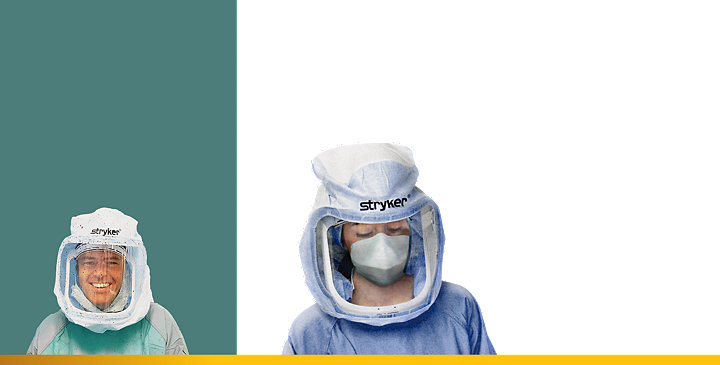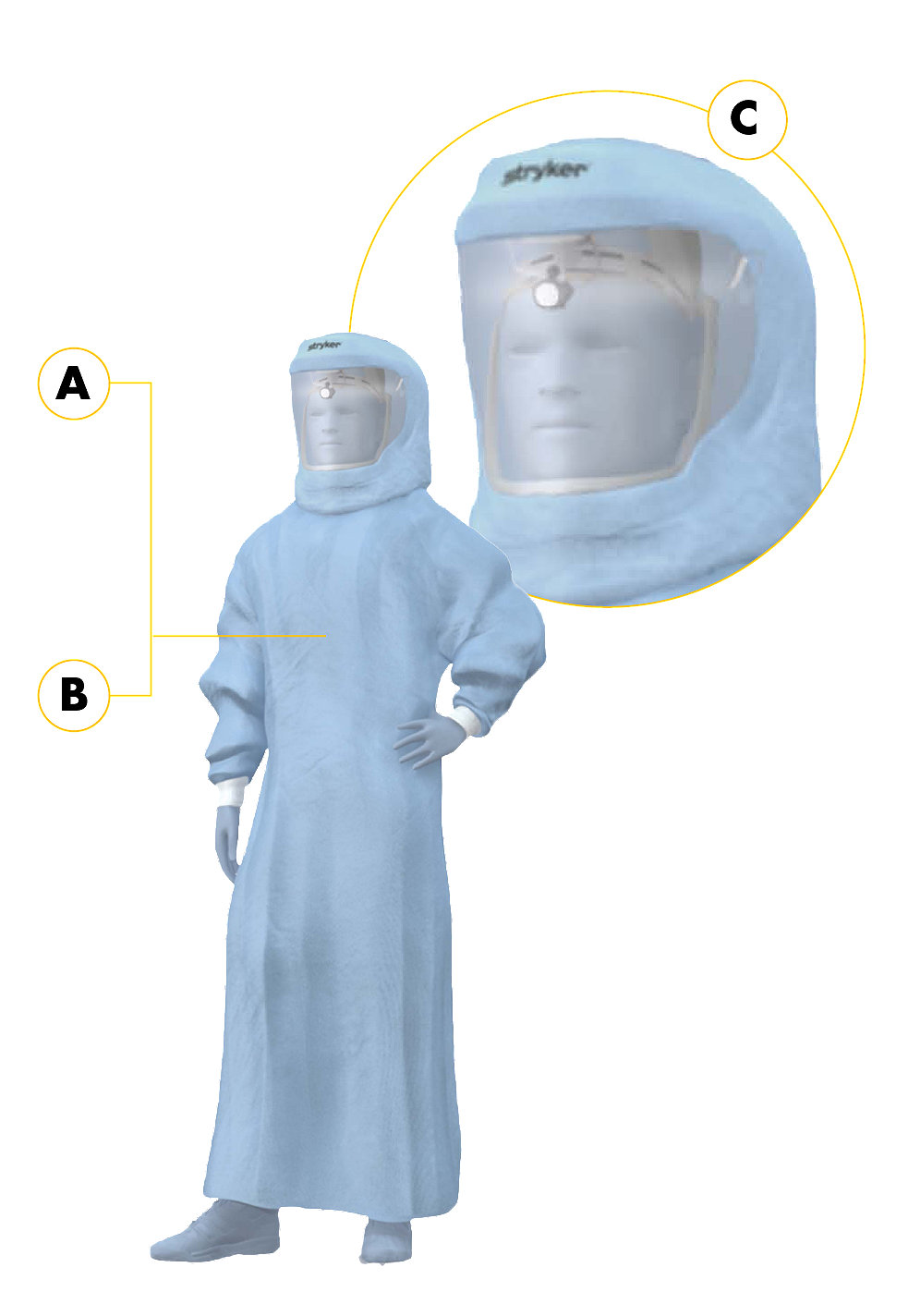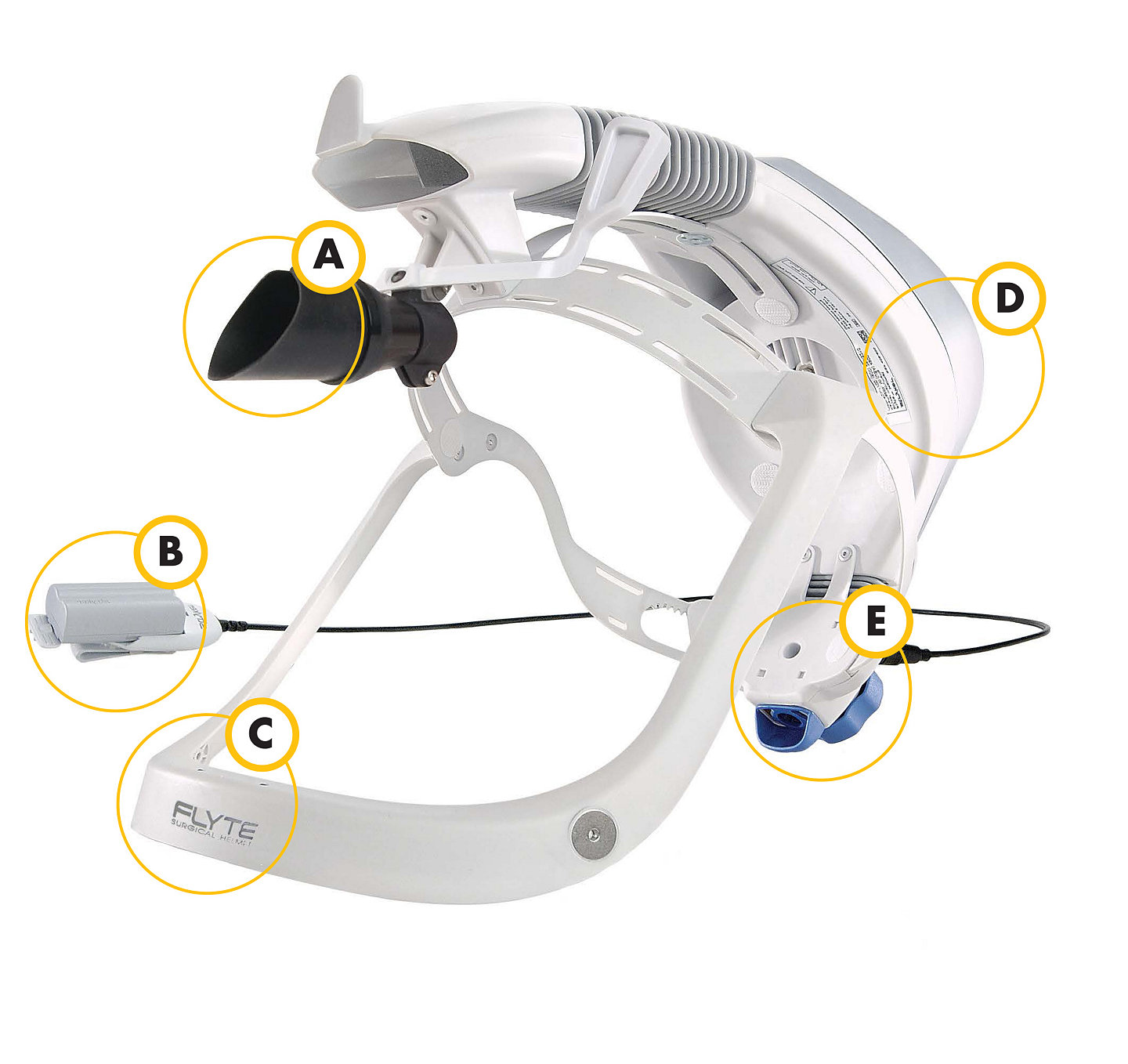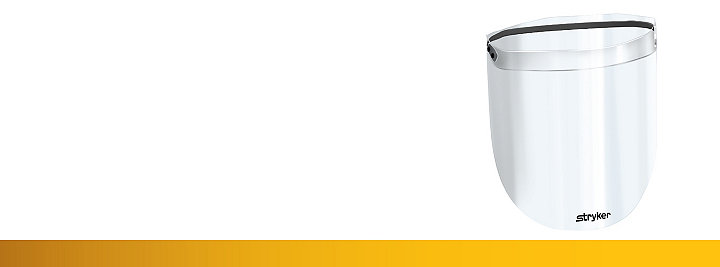Flyte
Personal Protection System
Flyte Personal Protection Hoods and Togas are designed to protect healthcare professionals against contamination, exposure to infectious bodily fluids, and the transfer of microorganism and particulate matter.

Protecting you
while you protect others
On average, orthopaedic surgeons get splashed with 203 blood and fatspots during a hip revision surgery.1
1 Billion
Operating staff can be one of the main sources of contamination, an individual can release 1,000,000,000 skin cells per day through skin shedding, out of which approximately 10% of particles carry microorganisms.3
Surgical masks may have up to 50% filter leakage, while surgeon’s conjuctiva has been contaminated in 30 % of cases!2
”The type of surgery we do will always involve splashes and stains,
but we can reduce the risk we face in each surgery, in each patient.”*
Dr Dr. Carlos Revenga Giertych

Dr. Carlos Revenga Giertych is a specialist in orthopaedics and trauma at Hospital San Juan Grande (Spain) and part of our European Personal Protection Equipment Group. Visit their blog to read more on why these fellow surgeons choose to use Stryker’s helmet based personal protection.
Dr. Düsing is a specialist in orthopedics and trauma surgery St. Elisabeth hospital, Leipzig, Germany.
"
The hood and the visor offer a protective function against blood- and liquid splashes, especially in face and eyes.4
"
Flyte togas and hoods provide full coverage
to the head and neck region without any gaps
The ECDC recommends using a separate splash-proof hood for full protection of the face area since most valved FFP respirators are not certified as splash proof.
An FFP1, 2 or 3 mask can be worn underneath Flyte, to combine respiratory and liquid protection.

AAMI Level 4*
highest grade fabric helping safeguard against exposure to infectious bodily fluids and transfer of microorganisms and
particulate matter. **
PeelAway Lenses***
helping you maintain clear visibility during surgery, easily peel the lens away.
Lightweight
Lightweight helmet with fan to keep you cool, dry and comfortable during long and complex procedures.
* AAMI PB70 standard for level 4 protection
**Critical zones of the togas meet Level 4 protection against bloodborne pathogens per AAMI PB70, less critical zones meet Level 1
***All Flyte lenses meet the EN-166 standard for protective eyewear.
Flyte Hood and Toga
(A) Water-resistant gown
- Togas conform to the high performance requirements of EN - 13795 and offer a long-sleeve water-resistant gown
(B) Strong sealed seems
- Sealed seams provide a strong, secure barrier against contamination

(C) Clear visibility
- An optional, sterile three-layer peel-away lens for clear visibility
- Wide field of view
Flyte Surgical Helmet
(A) High-intensity LED technology
- Battery-powered LED light: Helmet models available with or without light
- 60,000 Lux -5,575 Lumens/sq ft
- Emits a cool beam of pure white light
- Up to 100,000 hours of head lamp life - Lamps are shrouded to prevent glare
- Light adjustment handle directs headlight beam as desired
- High-intensity LED technology
(B) Lithium ios battery power
- Power loss indicator on helmet flashes red when power pack has less than 15 minutes of power remaining
(C) Chinguard Control buttons
- Six-speed fan control button changing fan speed

(D) Temperature control
- Six-speed fan quietly circulates cool, fresh air throughout the helmet and suit allowing you to keep cool during procedures
- Rear air nozzle directs air down the neck and back of suit
- Flexible air duct extends and retracts to direct air to the front of helmet
- Easily adjustable sides and height for a secure, comfortable fit
- Lightweight: 0.68kgMagnets for easy attachment to Flyte Togas/Hoods
Face Shield
Single use face shield for use
in Emergency Health Care Setting
Stryker’s Face shield helps protect healthcare professionals against both superficial mechanical injury as well as against prolonged contact with water.

1. Singh, B.I. (2006). Risk of conjunctival contamination in total joint arthroplasty. Journal of Hospital Infection, 63, 275-280.
2. Mansour, A., Even, J., Phillips, S., & Halpern, J. (2009). Eye protection in orthopaedic surgery. An in vitro study of various forms of eye protection and their effectiveness. The Journal of bone and joint surgery American volume, 91 (5), 1050-4.
3. Sandle, IVTNetwork, 2014 (http://www.ivtnetwork.com/article/people-cleanrooms-understanding-and-monitoring-personnel-factor)
4. Dr. Düsing is a paid consultant of Stryker. The opinions expressed herein are the opinions of Dr. Düsing and not necessarily those of Stryker. Individual experiences may vary.
*Critical zones of the togas meet Level 4 protection against bloodborne pathogens per AAMI PB70, less critical zones meet Level 1.
ECDC Guidelines
For respiratory protection, the ECDC Guidelines recommend using an FFP2 or FFP3 respirator when assessing a suspected COVID-19 case or managing a confirmed case, and an FFP3 mask for aerosol generating procedures.The ECDC recommends using a separate splash-proof hood for full protection of the face area since most valved FFP respirators are not certified as splash proof.
SMACC 2020-24994
